North Carolina's 11th congressional district
North Carolina's 11th congressional district encompasses most of Western North Carolina. Starting in the 113th Congress, it was last represented by Mark Meadows, a Republican. He replaced Democrat Heath Shuler, who retired in 2013. Shuler had won the seat in the 2006 midterm elections, defeating 8-term Republican Representative Charles H. Taylor. After a court-supervised 2019 redistricting, Meadows announced in December that he will not run for re-election in 2020,[4] and on March 30 he resigned to become White House Chief of Staff.[5]
| North Carolina's 11th congressional district | |
|---|---|
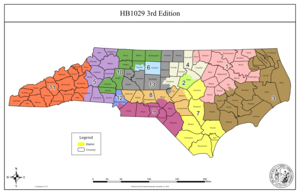 North Carolina's 11th congressional district since November 15, 2019 | |
| Representative | Vacant |
| Distribution |
|
| Population (2018) | 768,166[2] |
| Median income | $47,579[2] |
| Ethnicity |
|
| Cook PVI | R+14[3] |
Redistricting
The 11th district was traditionally known for its volatile politics and was considered one of the most competitive congressional districts in North Carolina, albeit with a slight Republican tilt. It was historically anchored by the heavily Democratic city of Asheville. However, many of the city's suburbs are among the most conservative areas in the state. The rest of the district was split between Democratic-leaning counties in the south and Republican-leaning counties in the north. Consequently, congressional races were historically very close and hard-fought.
In 2011 the Republican-controlled legislature redrew the district, shifting much of Asheville to the 10th district, where its Democratic tilt was diluted by the overwhelming Republican inclination of the rest of the district. The new map split Asheville in such a way that in some neighborhoods, one side of the street moved to the 10th while the other side of the street stayed in the 11th.[6]
To make up for the loss in population, the 11th absorbed some strongly Republican territory in the Foothills which had previously been in the 10th. On paper, it was one of the most Republican districts in the state. Due to the district becoming much more conservative than its previous iteration, three-term Democratic incumbent Heath Shuler did not run for reelection in 2012, and was succeeded by Republican Mark Meadows.
In 2019, a panel of North Carolina judges ruled that the existing map was a partisan gerrymander, and ordered new congressional districts to be drawn ahead of the 2020 election.[7] After review in December, a new map was approved. Under the new map, the district includes the western part of Rutherford County and the entirety of Avery, Buncombe, Cherokee, Clay, Graham, Haywood, Henderson, Jackson, Macon, Madison, McDowell, Mitchell, Polk, Swain, Transylvania, and Yancey Counties.[8][3] The new district still leans Republican, but less so than before, as it once again includes all of Asheville.
List of members representing the district
| Name | Party | Years | Cong ress |
Electoral history | District location |
|---|---|---|---|---|---|
| District created March 4, 1803. | |||||
| James Holland | Democratic-Republican | March 4, 1803 – March 3, 1811 |
8th 9th 10th 11th |
Redistricted from the 1st district and re-elected in 1803. Re-elected in 1804. Re-elected in 1806. Re-elected in 1808. Retired. |
1803–1813 [data unknown/missing] |
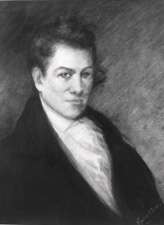 Israel Pickens |
Democratic-Republican | March 4, 1811 – March 3, 1813 |
12th | Elected in 1810. Redistricted to the 12th district. | |
| Peter Forney | Democratic-Republican | March 4, 1813 – March 3, 1815 |
13th | Elected in 1813. Retired. |
1813–1823 [data unknown/missing] |
| Daniel M. Forney | Democratic-Republican | March 4, 1815 – 1818 |
14th 15th |
Elected in 1815. Re-elected in 1817. Resigned. | |
| William Davidson | Federalist | December 2, 1818 – March 3, 1821 |
15th 16th |
Elected November 7, 1818 to finish Forney's term and seated December 2, 1818. Re-elected in 1819. Lost re-election. | |
| Henry W. Connor | Democratic-Republican | March 4, 1821 – March 3, 1823 |
17th 18th 19th 20th 21st 22nd 23rd 24th 25th 26th |
Elected in 1821. Re-elected in 1823. Re-elected in 1825. Re-elected in 1827. Re-elected in 1829. [data unknown/missing] | |
| Jackson Democratic-Republican | March 4, 1823 – March 3, 1825 |
1823–1833 [data unknown/missing] | |||
| Jacksonian | March 4, 1825 – March 3, 1837 | ||||
| 1833–1843 [data unknown/missing] | |||||
| Democratic | March 4, 1837 – March 3, 1841 | ||||
| Greene W. Caldwell | Democratic | March 4, 1841 – March 3, 1843 |
27th | [data unknown/missing] | |
| District inactive | March 4, 1843 – March 3, 1933 | ||||
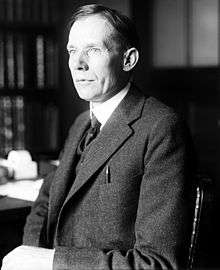 Zebulon Weaver |
Democratic | March 4, 1933 – January 3, 1943 |
73rd 74th 75th 76th 77th |
Redistricted from the 10th district and re-elected in 1932. Re-elected in 1934. Re-elected in 1936. Re-elected in 1938. Re-elected in 1940. Redistricted to the 12th district. |
1933–1943 [data unknown/missing] |
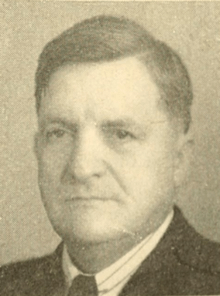 Alfred L. Bulwinkle |
Democratic | January 3, 1943 – August 31, 1950 |
78th 79th 80th 81st |
Redistricted from the 10th district and re-elected in 1942. Re-elected in 1944. Re-elected in 1946. Re-elected in 1948. Died. |
1943–1953 [data unknown/missing] |
| Vacant | August 31, 1950 – November 7, 1950 | ||||
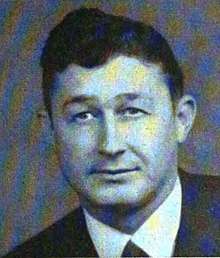 Woodrow W. Jones |
Democratic | November 7, 1950 – January 3, 1957 |
81st 82nd 83rd 84th |
Elected to finish Bulwinkle's term. Also elected in 1950 to the next term. Re-elected in 1952. Re-elected in 1954. [data unknown/missing] | |
| 1953–1963 [data unknown/missing] | |||||
 Basil Whitener |
Democratic | January 3, 1957 – January 3, 1963 |
85th 86th 87th |
Elected in 1956. Re-elected in 1958. Re-elected in 1960. Redistricted to the 10th district. | |
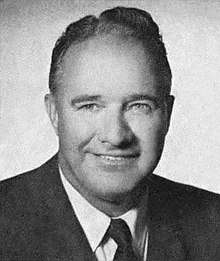 Roy A. Taylor |
Democratic | January 3, 1963 – January 3, 1977 |
88th 89th 90th 91st 92nd 93rd 94th |
Redistricted from the 12th district and re-elected in 1962. Re-elected in 1964. Re-elected in 1966. Re-elected in 1968. Re-elected in 1970. Re-elected in 1972. Re-elected in 1974. [data unknown/missing] |
1963–1973 [data unknown/missing] |
| 1973–1983 [data unknown/missing] | |||||
 V. Lamar Gudger |
Democratic | January 3, 1977 – January 3, 1981 |
95th 96th |
Elected in 1976. Re-elected in 1978. Lost re-election. | |
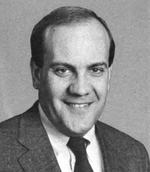 Bill Hendon |
Republican | January 3, 1981 – January 3, 1983 |
97th | Elected in 1980. Lost re-election. | |
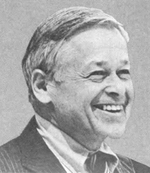 James M. Clarke |
Democratic | January 3, 1983 – January 3, 1985 |
98th | Elected in 1982. Lost re-election. |
1983–1993 [data unknown/missing] |
 Bill Hendon |
Republican | January 3, 1985 – January 3, 1987 |
99th | Elected in 1984. Lost re-election. | |
 James M. Clarke |
Democratic | January 3, 1987 – January 3, 1991 |
100th 101st |
Elected in 1986. Re-elected in 1988. Lost re-election. | |
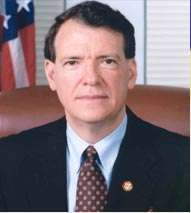 Charles H. Taylor |
Republican | January 3, 1991 – January 3, 2007 |
102nd 103rd 104th 105th 106th 107th 108th 109th |
Elected in 1990. Re-elected in 1992. Re-elected in 1994. Re-elected in 1996. Re-elected in 1998. Re-elected in 2000. Re-elected in 2002. Re-elected in 2004. Lost re-election. | |
| 1993–2003 [data unknown/missing] | |||||
| 2003–2013 | |||||
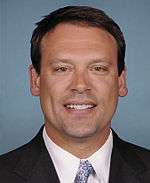 Heath Shuler |
Democratic | January 3, 2007 – January 3, 2013 |
110th 111th 112th |
Elected in 2006. Re-elected in 2008. Re-elected in 2010. Retired. | |
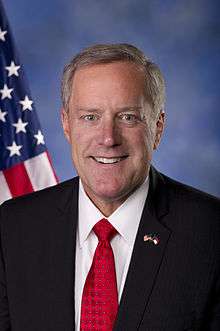 Mark Meadows |
Republican | January 3, 2013 – March 30, 2020 |
113th 114th 115th 116th |
Elected in 2012. Re-elected in 2014. Re-elected in 2016. Re-elected in 2018. Resigned to become White House Chief of Staff.[5] |
2013–2019.tif.png) |
2019–present | |||||
| Vacant | March 30, 2020 – January 3, 2021 |
116th | |||
| TBD | January 3, 2021 – |
117th | Elected in 2020. | ||
Notes
- "Congressional Districts Relationship Files (State-based)". census.gov. Archived from the original on April 2, 2013.
- "Congressional District 11 (116th Congress), North Carolina". census.gov.
People for population, Socio-Economic for median income
- "HB 1029, 3rd Edition". ncleg.gov.
- McPherson, Lindsey (December 29, 2019). "North Carolina's Mark Meadows won't run for reelection". Roll Call. Washington, D.C. Retrieved December 19, 2019.
- Burgess, Joel. "North Carolina's Mark Meadows will leave Congress early for White House post". Retrieved March 7, 2020.
- Timm, Jane (September 9, 2017). "They're Still Drawing Crazy-Looking Districts. Can't It Be Stopped?". NBC News.
- https://www.cnn.com/2019/10/28/politics/north-carolina-gerrymandering-2020-election-judges/index.html
- "NC House Bill H1029 - Ratified" (PDF). NC Legislature. November 15, 2019.
References
- Martis, Kenneth C. (1989). The Historical Atlas of Political Parties in the United States Congress. New York: Macmillan Publishing Company. ISBN 9780029201701.
- Martis, Kenneth C. (1982). The Historical Atlas of United States Congressional Districts. New York: Macmillan Publishing Company. ISBN 978-0029201503.
- "Biographical Directory of the U.S. Congress 1774-Present". bioguideretro.congress.gov.